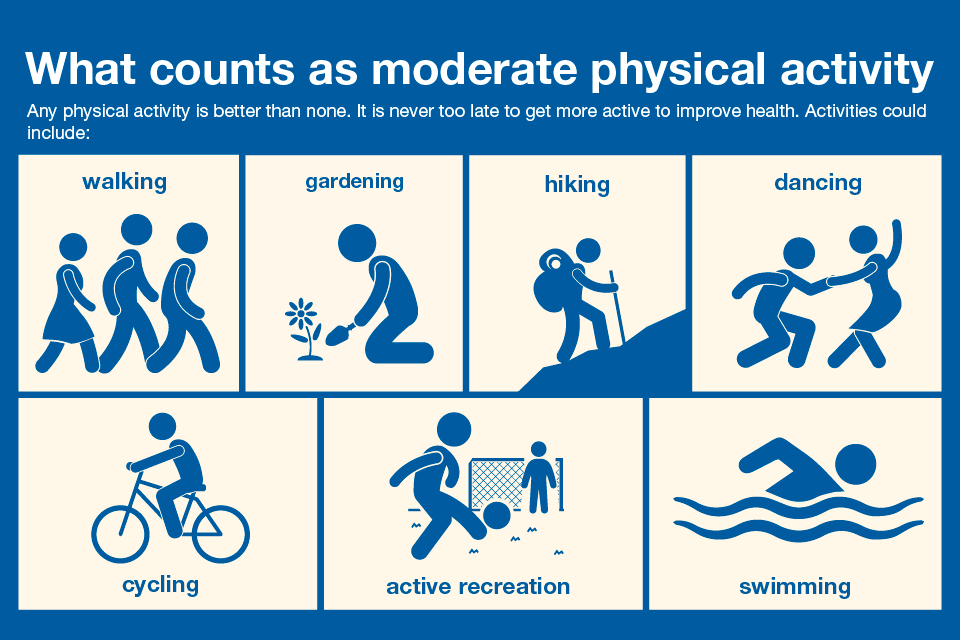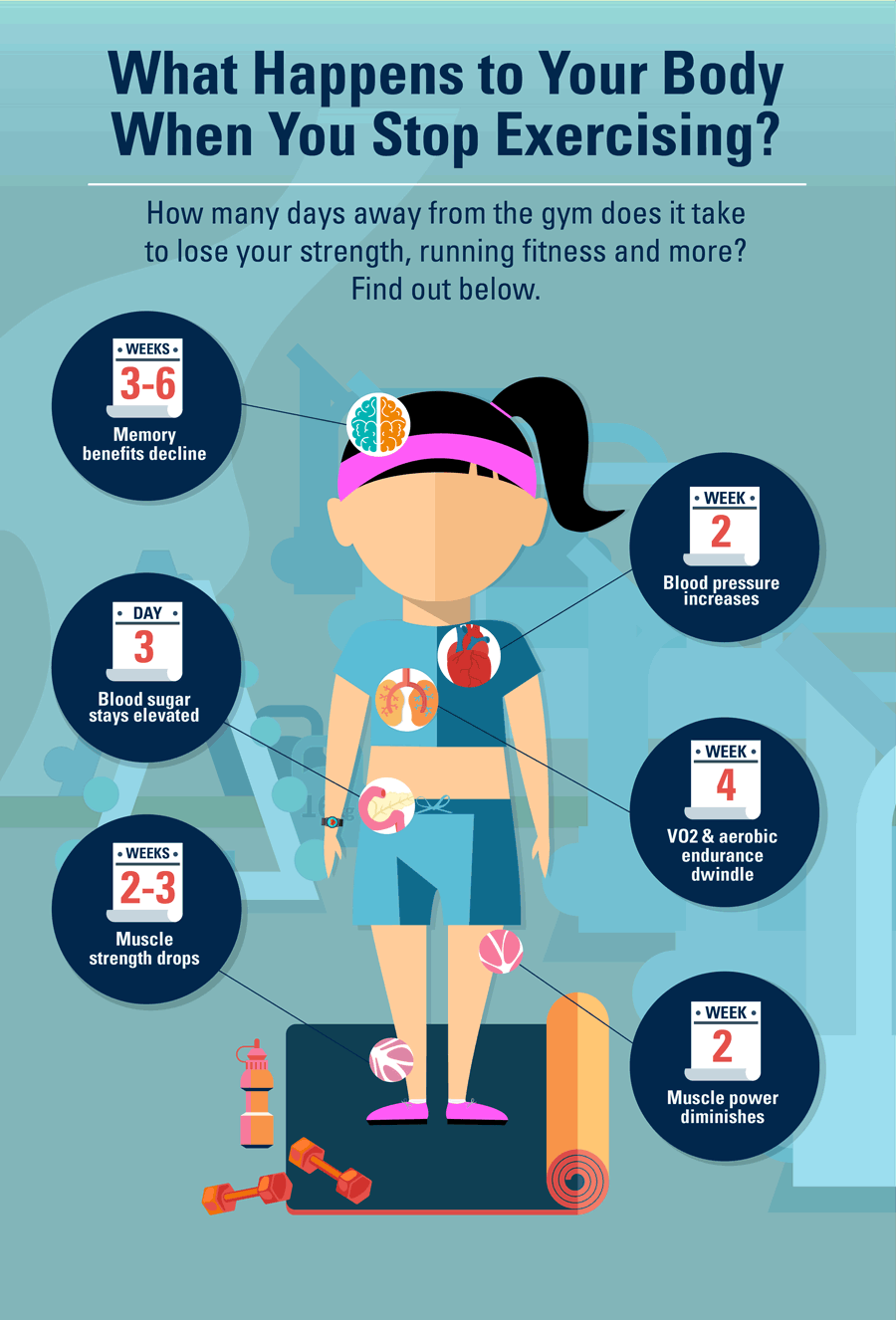The 2nd edition of the Physical Activity Guidelines for Americans provides advice and information on the amounts and types of physical activity for improving the health of various population groups. The emphasis of the recommendations is that moving more and sitting less will benefit just about everyone.[1]
Recommendations:
- Preschool children aged 3 to 5 years ought to be physically active during the day for enhancing development and growth.
- Children and adolescents between the ages of 6 and 17 ought to perform a minimum of an hour of moderate to vigorous physical activities every day.
- Adults ought to perform a minimum of 150 to 300 minutes of moderate-intensity physical activities every week, or 75 to 150 minutes of vigorous-intensity aerobic physical activities every week, or a similar moderate and vigorous-intensity aerobic activities combination. They ought to do muscle-strengthening activities twice a week as well.
- Older adults ought to perform physical activity consisting of multiple components which includes balance training in addition to aerobic and muscle-strengthening activities.
- Postpartum and pregnant women ought to perform a minimum of 150 minutes of moderate-intensity aerobic activities every week.
- Individuals having chronic ailments or disabilities, and who are able, ought to follow the key adult guidelines and do both aerobic as well as muscle-strengthening activities.
- The least physical active people will benefit most by just a modest increase in moderate-to-vigorous physical activities. More benefits are had with any increase in physical activity. Aerobic as well as muscle-strengthening physical activities are of benefit.
Newly identified evidence since the 2008 physical activity guidelines for the health benefits of physical activity:
- Better bone health and weight status for 3 to 5 year olds
- Better cognitive function for 6 to 13 year olds
- Decreased risk of additionally identified cancer locations
- Health benefits for the brain, such as better cognitive function, a reduction in risk of depression and anxiety, and better quality of sleep and life in general
- A reduction of fall-related injury risk for elderly individuals
- A reduction in excessive weight gain risk, gestational diabetes risk, and postpartum depression risk for women who are pregnant
- A reduction of all-cause and disease-specific mortality risk for individuals having various chronic medical conditions, as well as better function and quality of life

Image Source – gov.uk
Want to use this image on your site?
Simply copy and paste the code below to embed the image on your page
A Key Concept of Guidelines are the Types and Intensities of Physical Activity
Aerobic Activities
A physical activity in which the large muscles of the body are in motion for a sustained amount of time, resulting in an increase in heart rate and labored breathing, thus improving cardio respiratory fitness. Aerobic physical activity is also known as endurance or cardio.
Aerobic activity consists of 3 components: intensity, duration and frequency. Intensity being how hard an individual has to work to perform the activity. Examples of intensities are moderate intensity (brisk walking or an equivalent effort) and vigorous intensity (running/jogging or an equivalent effort). Frequency being how often an individual performs the activity. Duration being how long an individual performs an activity in any single session.
Muscle-Strengthening Activities
These activities, including weight lifting and resistance training, cause the muscles of the body to hold or work against an applied weight or force, helping to improve skeletal muscle strength, power, endurance, and mass. Weight lifting involves the lifting of relatively heavy weights repetitively for the strengthening of the different muscle groups, and resistance training involves making use of body weight or elastic bands for resistance.
There are three components that muscle-strengthening activities consist of: intensity, frequency, and sets and repetitions. The intensity being the amount of weight or force that’s used relative to how much an individual is capable of lifting. The frequency being how frequently an individual performs muscle-strengthening activities. The sets and repetitions being how many times an individual performs the muscle-strengthening activities, in comparison to aerobic activities duration.
Muscle-strengthening activity effects are restricted to the muscles performing the work. It’s important that all the body’s major muscle groups are worked.
Bone-Strengthening Physical Activities
Bone-strengthening, known as weight-loading or weight-bearing, activities result in a force on the body’s bones which stimulates the strength and growth of the bones. These activities could also be of the aerobic and muscle-strengthening activity types. Running or jumping rope are examples of bone-strengthening activities.
Balance Activities
Balance activities can help improve the ability for resisting forces within or outside the body which can result in falls while an individual is moving or stationary. Strengthening the abdomen, back, and leg muscles also improves balance. Walking backward or lunges are examples of balance activities.
Multi Component Physical Activities
Multi component physical activities are those that include a combination of aerobic, muscle-strengthening, and balance activities. Recreational activities like yoga, dancing, tai chi, or the kinds of sports that integrate different kinds of physical activity can be considered multi component activities.
Physical Activity Intensities
The guidelines focus on 2 intensity levels, moderate-intensity activities and vigorous-intensity activities. Aerobic activity intensity can be monitored in two ways, absolute and relative intensities.
Absolute Intensity
Absolute intensity would be how much energy is expended while performing the activity, without taking into consideration the aerobic capacity or cardio respiratory fitness of the person. Absolute intensity is depicted in MET units (metabolic equivalent of task). 1 MET unit is equal to the resting metabolic rate or energy expended when awake and still. A moderate-intensity activity has a MET value of 3 – 5.9 METs, and a vigorous-intensity activity has a MET value of 6 or more.
A moderate-intensity activity example, as defined by absolute intensity, would be a brisk walk at 2.5 to 4.0 mph. An example of a vigorous-intensity activity would be jogging. Certain activities, depending on the effort, can be moderate as well as vigorous intensity, such as cycling or swimming. Less time is required for getting the same benefits from a vigorous-intensity activity compared to a moderate-intensity activity.
Our activity calorie calculator makes use of MET units to determine how many calories are burned while performing various physical activities.
Relative Intensity
Adjusts for or takes into account the cardio respiratory fitness of the person. A person who is fitter will experience an exercise easier and therefore rate it at a lower relative intensity than a person who isn’t as fit.

Image source – uofmhealth
Save
Save
Save
Save
Save
Save
Save
Save
Save
